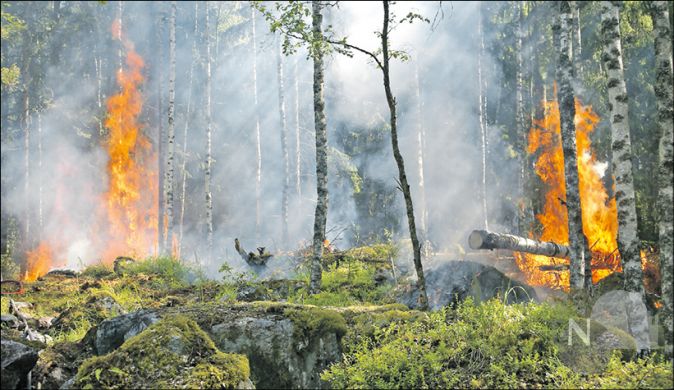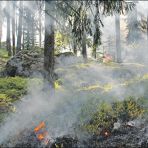Hesse
(kw) – Do the forest fires have anything to do with the climate crisis? NABU provides answers to the most important questions. To begin with, very long dry periods are indeed an extreme phenomenon. The researchers agree that such weather conditions will certainly occur more frequently in the future. In addition, droughts naturally favor fire, so there is a connection.
However, there are two factors that are not directly related to climate change: On the one hand, most fires are caused by human action – whether actively by arson, by negligence such as cigarette butts, hot car catalysts or by the ignition of old ammunition remnants on military training grounds.
On the other hand, the landscape transformation by human interference is an additional factor: wetlands have been drained and thus the water balance has been changed, the landscape is drying up faster. And the planted forest monocultures of conifers, which are often found, burn much faster than a near-natural deciduous forest.
Why do almost only pine forests burn?
The needle litter on the ground ignites faster than the humous topsoil in a deciduous forest. In coniferous forests, the litter can accumulate over years, which then burns like tinder. Basically, this is a natural process that also occurs naturally in the Nordic forest ecosystems, for example triggered by a lightning strike. In our latitudes, however, this occurs with completely different effects and favored by the already mentioned human influences. Something similar can also be seen in a moor fire, as it was in 2018 in the Tinner Dose in Lower Saxony. There, a very drained area was affected by the fire, which was triggered by a German Armed Forces maneuver.
What concrete measures must now be taken to protect forests?
Near-natural deciduous forests are valuable for nature conservation and climate adaptation – and thus also for forest fire prevention.
Concrete measures for protection
Forest development
with a high proportion of deciduous trees, which form a low-combustible and rapidly decomposing soil litter with high water storage capacity compared to needles.
Mixed-age Forest development
with a high vertical structure leads to higher shading, less wind incidence, less convection air flows. This contributes to cooling and moisture retention within the forest climate.
Leave more deadwood
in the forests. It sounds paradoxical at first but lying deadwood does not burn very well. On the contrary, it provides shade and stores a lot of water – and thus helps to keep the forest cool and moist. The forests, forest edges and fire protection corridors must be equipped with vegetation that slows down the fire. Pine monocultures should disappear from the landscape as soon as possible.
In hazardous areas
, modern extensive forest fire monitoring is needed, because the time factor is enormously important in fire reaction. The fire brigades must be equipped with special technology and equipment to fight forest fires as well as with know-how to contain the fires as quickly as possible. This can also include the controlled setting of counterfires and preventive fires.
Will the forests recover?
Yes, you can assume that. But it will take time, with forests you must think in terms of decades and centuries. However, they will probably look different from what they do today. It would at least be negligent to just carry on as before. In some places, forest conversion, towards a site-typical deciduous (mixed) forest, may even be favored by the fires, because action must now be taken more quickly.
How can forests be better prepared against drought?
Since forestry is very much dependent on the climate, it is important to adapt forests as well as possible to the risks posed by changing environmental conditions and weather extremes.
The near-natural deciduous forests with a large variety of cooling and water-retaining structures and native tree species are probably best prepared for the future. Nature conservation, therefore, ultimately serves to protect our health when it comes to forest fires, but also to wood production itself. No forest owner can want the forest to burn down.
For years, we have been accompanied by reports of forest fires – in Germany, Europe and worldwide. Is it all a sign of climate change?
Foto: Pixaby/Ylvers
Foto: Pixaby

